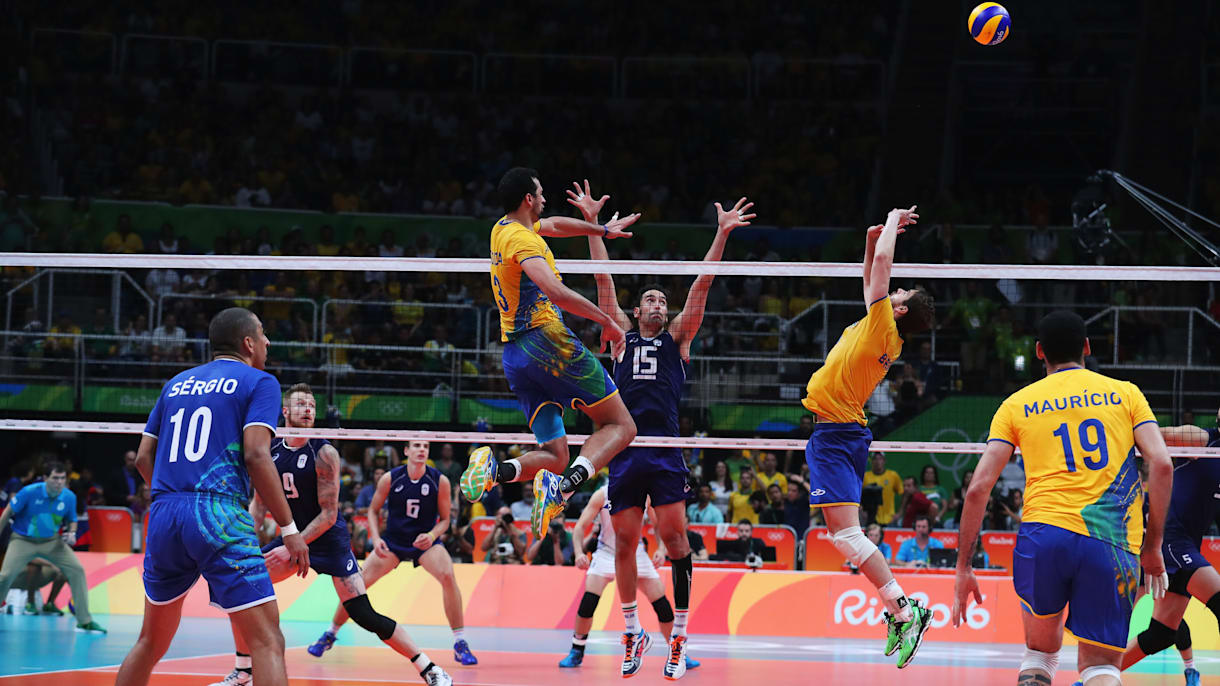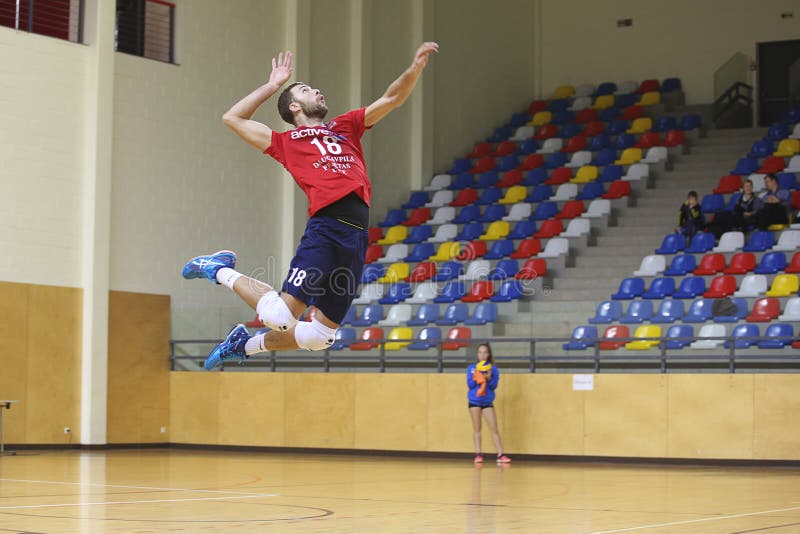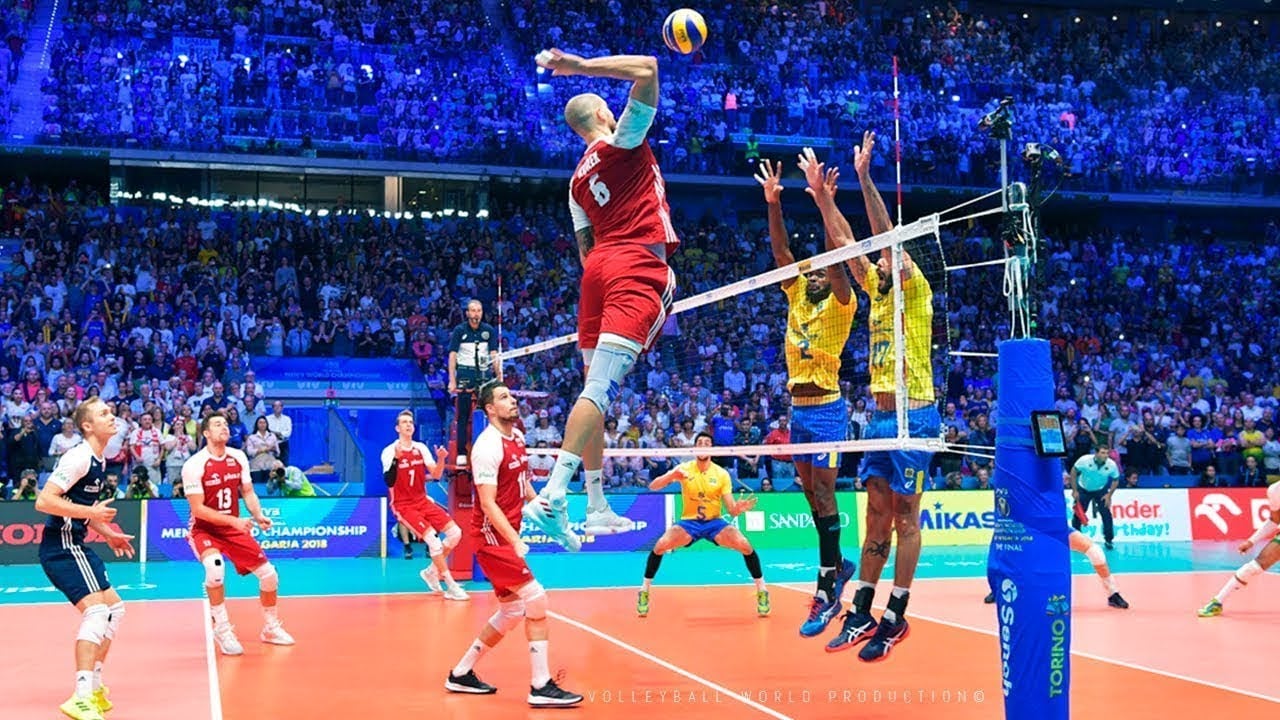Introduction:
Volleyball rules are essential for anyone who wants to play the game effectively. Whether you’re competing in professional leagues like the FIVB Volleyball World Championship, the Olympic Volleyball Tournament, or just enjoying a casual match at the beach, understanding the fundamental rules can make a huge difference.
Volleyball is more than just a game of hitting the ball over the net—it’s a sport that requires teamwork, precision, and strategy. From serving and rotation to blocking and scoring, every player needs to understand how the game flows. A well-structured knowledge of the rules helps players avoid unnecessary fouls, make better strategic decisions, and contribute more effectively to their team’s success. Whether you’re a beginner or an experienced athlete, this guide will break down the 12 essential volleyball rules in a clear and engaging way, so you can elevate your game and play with confidence.
1. Team Composition and Player Positions:
Each volleyball team consists of six players on the court at a time. The team is divided into different positions, each with specific responsibilities:
- Setter: The playmaker who sets up attacks and controls the offense.
- Outside Hitter (Left-Side Hitter): A key attacker responsible for powerful spikes and passing serves.
- Opposite Hitter (Right-Side Hitter): Plays a defensive and attacking role opposite the setter.
- Middle Blocker: Primarily focuses on blocking and quick offensive attacks.
- Libero: A defensive specialist who cannot attack or block but is crucial in passing and digging.
- Defensive Specialist: Similar to the libero but with fewer restrictions, focusing on defense.
Teams rotate positions after winning a serve, ensuring all players get a chance to serve and play different roles. Understanding each position is key to building a strong, well-rounded team.
2. Scoring System:
Volleyball follows a rally scoring system, meaning a point is awarded on every serve, regardless of which team serves.
- Sets 1-4: Played to 25 points, requiring a two-point advantage to win.
- Set 5 (Tiebreaker Set): Played to 15 points with the same two-point win condition.
- Winning the Match: The first team to win three sets wins the match.
This system ensures high-intensity gameplay, rewarding consistency and precision. Because every rally counts, teams must remain focused and make each play count.
3. Match Structure:
A volleyball match consists of up to five sets, with the first team to win three sets declared the winner.
- Intervals Between Sets: A 3-minute break allows teams to hydrate and strategize.
- Time-Outs: Teams get two 30-second timeouts per set to regroup and adjust strategies.
- Technical Timeouts: Used in international play when a team reaches 8 and 16 points in the first four sets.
Managing stamina and momentum throughout the match is crucial. Coaches often use timeouts and intervals strategically to keep their teams energized and mentally prepared.
4. Serving Rules:

Serving starts every rally and must follow these rules:
- The server must stand behind the end line until contact is made.
- The ball must cross over the net and land within the opponent’s court.
- A serve that hits the net but still lands inbounds is legal (let serve).
- Servers must follow the correct rotation order.
Common types of serves include:
- Float Serve: Moves unpredictably, making it hard to pass.
- Jump Serve: A powerful and aggressive serve that adds speed.
- Topspin Serve: Spins forward, making it drop quickly into the opponent’s court.
A strong serve can give a team a competitive edge by putting pressure on the receiving side and forcing errors.
5. Rotation and Positioning:
Players rotate clockwise after winning a rally and earning the serve.
- Front-row players are responsible for attacking and blocking.
- Back-row players focus on defense and cannot attack above the net from inside the attack line.
- Players must stay in their designated positions before the serve is made.
Incorrect positioning or failure to rotate properly can result in a violation, awarding the opposing team a point. Understanding rotation is key to maintaining an organized and strategic formation.
6. Ball Contact and Hits:
Teams are allowed a maximum of three contacts before returning the ball.
- A typical sequence: pass (bump), set, attack (spike).
- A player cannot touch the ball twice in a row, except after a block.
- The ball may touch any part of the body as long as it is legally played.
Illegal hits, such as carrying, catching, or throwing the ball, result in a point for the opposing team. Good ball control and clean touches are essential to executing effective plays.
7. Blocking and Attacking:
- Blocking: Only front-row players can block an opponent’s attack.
- Attacking: Back-row players may attack only if they jump behind the attack line (10-foot line).
- Double Hits: A player cannot attack the ball twice consecutively unless the first touch was a block.
- Carrying/Throwing Violations: Players must hit the ball cleanly without holding or throwing it.
Proper execution of blocks and attacks can significantly impact a team’s defensive and offensive strategies.
8. Net Violations:
Players must not touch the net during play.
- Contact with the net while attacking, blocking, or playing the ball results in a point for the opponent.
- Crossing under the net and interfering with the opponent’s play is also a violation.
- The ball is allowed to touch the net during play without penalty.
Avoiding net violations ensures clean and fair play while preventing unnecessary errors.
9. Ball In or Out:
- A ball is in if it lands on the boundary lines or inside the court.
- A ball is out if it lands completely outside the boundary lines or touches the antenna.
- Referees use line judges and video replay in professional games to determine close calls.
Being able to judge whether a ball is in or out can influence strategic plays and decision-making.
10. Substitution Rules:
Teams are allowed six substitutions per set.
- The libero can enter for any back-row player without counting as a substitution.
- Players must enter in a designated order and follow rotational rules.
- Substitutions must be signaled and approved by the referee.
Strategic substitutions help maintain energy levels and optimize team performance.
11. Libero Rules:
The libero is a specialized defensive player with unique rules:
- Cannot attack or block at the net.
- Must wear a different-colored jersey for easy identification.
- Can replace any back-row player without prior notice.
- Typically excels in serve reception and defensive play.
Liberos are crucial for strong defensive formations and quick transitions between plays.
12. Timeouts and Intervals:
- Teams can take two 30-second timeouts per set.
- Technical timeouts occur at 8 and 16 points in sets 1-4 in international competitions.
- No technical timeouts in the fifth set.
Timeouts allow teams to regroup, adjust strategies, and regain momentum at key moments.
Conclusion
Mastering these 12 essential volleyball rules is crucial for every player, whether you’re a beginner or a professional. Understanding the rules ensures fair play, improves performance, and makes the game more enjoyable.
With major events like the Olympic Games, FIVB World Championships, and NCAA Volleyball Championships, volleyball continues to grow in popularity. Now that you know these rules, you’re ready to step onto the court with confidence!


0 Comments